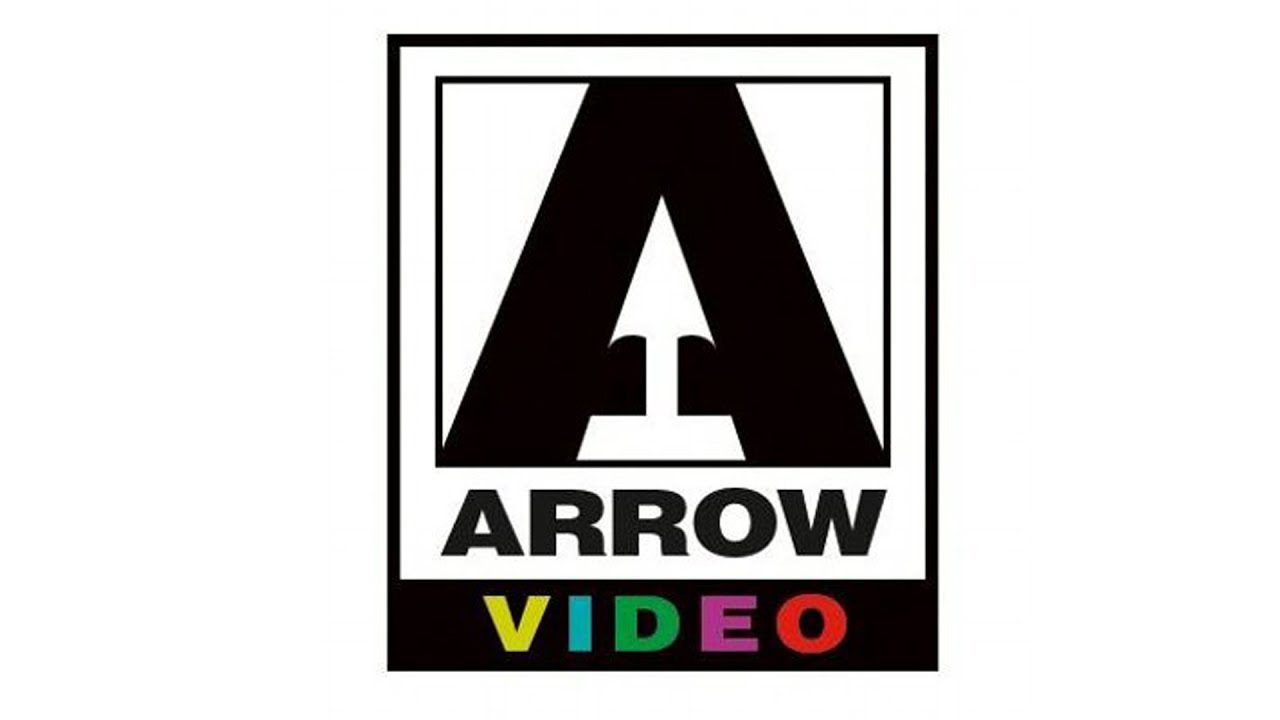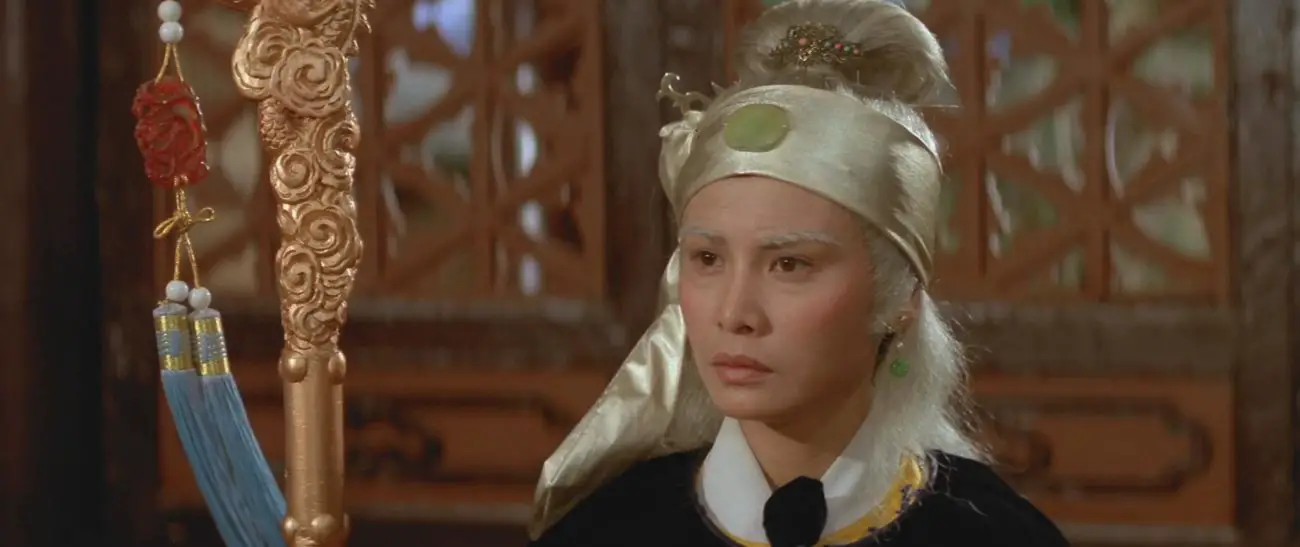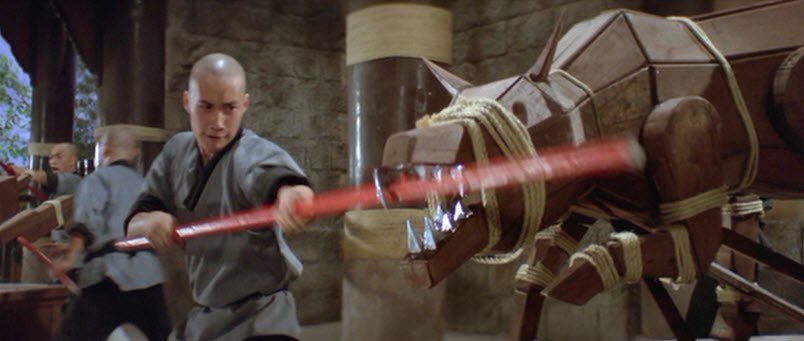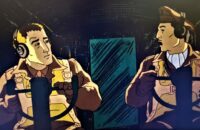Welcome to my column dedicated to the appreciation of physical media supplements called: Feature Presentations. The goal of this column is not to say whether a film is good or bad and worth picking up or not—I would like to highlight the discs that go the extra mile and provide film fans with enough tasty tidbits to satisfy even the hungriest of cinephiles. With all that out of the way, today’s article will focus on The 8 Diagram Pole Fighter from Arrow Video.
As a disclaimer of transparency, I was provided a review copy of The 8 Diagram Pole Fighter for this episode of Feature Presentations. All thoughts and opinions are my own.
When it comes to the martial arts genre, I have to be honest that I have barely scratched the surface. I am familiar with the works of Bruce Lee, Jackie Chan, and some of the output from Golden Harvest and the Shaw Brothers, but the amount of martial arts films released versus what I’ve seen isn’t even close. I’m working to rectify that, but there are only so many hours in a day.
After checking out The 8 Diagram Pole Fighter, I am ready to dip more than a toe into the Kung Fu genre. The film does an excellent job at telling an engaging story from previous text in Chinese folklore. Alexander Fu Sheng and Gordon Liu provide an excellent duo, handling drama and action, even if Fu Sheng’s character had to be written out due to his untimely passing. I also feel special praise should be directed to Lily Li as the mother of the seven sons. A great job all around!
The first feature is a 2022 video appreciation of The 8 Diagram Pole Fighter with film critic and historian Tony Rayns. For over 20 minutes, Rayns speaks about the production history of The 8 Diagram Pole Fighter, the cast and crew, the historical basis, and how the film reached the touchstones of pop culture through the Wu-Tang Clan and Star Wars. Rayns’ deliberate tone serves this discussion well as he traverses through many topics associated with The 8 Diagram Pole Fighter. For some whose knowledge of the martial arts genre is limited, listening to Rayns discuss and analyze The 8 Diagram Pole Fighter was a refreshing feature.
Next up is a 2004 interview with actor Gordon Liu, who plays the Fifth Brother in the film. Liu makes for an engaging listen as he talks about his time on set, working under director Lau Kar-leung, and the death of co-star Alexander Fu Sheng. Liu reminisces about a (mostly) positive work experience, including moments he is most proud of, though Fu Sheng’s passing still wears on him. While a shorter interview than one might hope, what Gordon Liu has to say makes this interview an essential watch.

Actress Lily Li contributes an interview filmed in 2004, discussing her time working on The 8 Diagram Pole Fighter. This interview comes off much different than the time spent with Liu. Li spends most of the interview detailing how she came into the industry and working in Kung Fu movies with the Shaw Brothers. While talk about The 8 Diagram Pole Fighter does come up, this interview plays more as a retrospective on Lily Li. I adore the inclusion of this interview as Li speaks honestly about her thoughts on the film industry and her background. I highly recommend this lengthy interview for anyone interested in acting and the filmmaking techniques of working in the Kung Fu genre.
The last interview on the disc is a 2004 sit-down with actress Yeung Ching-ching. Ching-ching talks about her history of practicing Chinese wushu and how she entered the film industry. Ching-ching discusses how her career led to The 8 Diagram Pole Fighter, her thoughts on the loss of Fu Sheng, and her career afterward. She then discusses leaving the Shaw Brothers when her contract expired in 1986 and her life and career post-Shaw Brothers. Yeung Ching-ching’s interview is another example of a must-listen with The 8 Diagram Pole Fighter only part of the discussion. These interviews may not go as in-depth as one may want on the feature, but they cast a wide net on Kung Fu cinema, a welcome surprise.
The next feature, A Tribute to Fu Sheng, is a short film made by the Shaw Brothers to commemorate the actor’s death that played before several screenings of The 8 Diagram Pole Fighter in 1984. This six-minute compilation features clips from Fu Sheng’s films, his funeral, and those who came to celebrate his life. While not essential, this was a nice feature for Arrow Video to include on the disc.
The 8 Diagram Pole Fighter also includes a feature-length commentary track with Jonathan Clements, author of A Brief History of China. Clements is highly knowledgeable about which The 8 Diagram Pole Fighter takes the story from and does a solid job of mixing history and production facts. I’m amazed at how consistently Clements speaks during the runtime without taking long pauses or repeating much material. Fans of the film and Chinese history should find plenty to enjoy with Clements’ comments.
The next bonus feature is a VHS-quality alternate title sequence for The 8 Diagram Pole Fighter. The credits play out similarly to the original version of the film, except with the titles in US American English.
Rounding out the disc is two trailers: the original theatrical and a digital reissue, plus a gallery of 55 stills. What you get for stills includes promotion materials, behind-the-scenes shots, and moments from the finished film.

And, there you have it! Coming from someone who doesn’t have an ear to the ground with Kung Fu films, I thoroughly enjoyed The 8 Diagram Pole Fighter. The film works well at using a historical basis for cinema and adds to it with a heaping helping of Kung Fu to make this one of the finest of the Shaw Brothers that I have seen so far. Arrow Video did an excellent job at compiling enough people familiar with the history, genre, and film to create a cinematic experience that even a Kung Fu novice like me can appreciate and recommend wholeheartedly.



